How do you define a hot hatchback? Should it be a practical, sensible family car that can roll up its sleeves and deliver a surprise punch? Or should it be a race car for the road that just happens to have five doors and a big boot? Or is there a space in between?
The Volkswagen Group has always veered towards the former theory, but that doesn’t mean it can’t change tactics. Here we’re testing two of its latest challengers, the Cupra Leon and the VW Golf GTI Clubsport.
Although Cupra is a familiar name, its purpose has recently changed. Formerly the badge reserved for the hottest cars within the SEAT line-up, today it’s a performance sub-brand in its own right. Some models are related to the Spanish counterparts, but others, like the Formentor SUV and electric Tavascan, will be unique to Cupra. We were left impressed by the Formentor on previous encounters, so will Cupra’s magic apply to the Leon too?
Even if it does, it’ll have its work cut out in this test, because it’s up against the most famous hot hatchback of all. This is no ordinary GTI, though, because the Clubsport takes the traits of the regular GTI and adds more power and focus to an already-involving package.
Which of these competitors will come out on top? We took both on road and track to find out.
Cupra Leon
| Model: | Cupra Leon 2.0 TSI 300 DSG VZ3 |
| Price: | £37,390 |
| Engine: | 2.0-litre 4cyl turbo, 296bhp |
| 0-62mph: | 5.7 seconds |
| WLTP economy: | 37.2mpg/8.2mpl |
| CO2: | 171g/km |
| Annual road tax: | £895 |
The Cupra Leon is available as a plug-in hybrid or a regular petrol model. Here we’re testing the most extreme version of the hatchback, badged 300. The car we’re driving is a Spanish-specification version, but it’s the closest match to the UK-based VZ3 trim, priced at £37,390.
Design & engineering
While it hasn’t been around for long as a standalone brand, Cupra has quickly carved out a unique aesthetic. Copper highlights applied to an otherwise understated body mean that the Leon manages to set itself apart from the rest of the hot-hatch crowd without being too lairy. Even beside the Golf GTI, you could almost call it subdued.
But beneath the differing bodies, the Cupra Leon and Golf GTI Clubsport are fundamentally very similar. Both cars ride on the latest version of the Volkswagen Group’s MQB platform, with a MacPherson-strut suspension arrangement at the front and a four-link layout at the back, plus adaptive dampers whose firmness can be controlled on a 15-point sliding scale. The cars also share the same EA888 evo4 2.0-litre turbocharged petrol engine, which makes 296bhp and 400Nm of torque, and power is sent to the front wheels via a seven-speed dual-clutch automatic gearbox and an electronically locking limited-slip differential. The latter helps the car rotate into turns, and also allows the front wheels to deploy as much power as possible on corner exit.
However, there are a couple of key differences between the Leon and the Golf. The Cupra’s wheelbase is 64mm longer and the company has applied its own unique tune to the suspension. The brakes are different, too, with Cupra turning to Brembo to supply some very beefy-looking 370mm drilled discs gripped by four-piston calipers.
Inside, Cupra spruces up the standard Leon cabin with more copper highlights, a sports steering wheel and heavily bolstered front seats, although the overall look is perhaps a little plain.
Driving
The encouraging discovery is that those Cupra-specific tweaks have created an engagingly playful – yet very quick – hot hatchback. It starts with the variable- ratio steering which, although lighter than in some rivals, treads a fine line between making the car feel agile without being too darty. It also doesn’t take much fighting to deploy the full 296bhp and 400Nm of torque through the front wheels. Torque steer is almost non-existent here.
All of this can be said of the Golf too, but where the Cupra really shines is with that suspension tune. Here is a car that has just a little more of a wild side than the VW. Throw it into a corner and you can get the Leon moving around; back off the throttle to trim your line and the rear end feels more willing to push the car tighter into the corner than in the Golf. Get hard on the power, and the differential feels clinically effective with the way it hauls the car into a tighter line and on to the next straight.
It all adds up to a car where your inputs with the throttle, brakes and steering feel like they have a greater influence over the car’s attitude than in the VW. In short, the Leon is the more rewarding car to drive. Thanks to a fruitier exhaust note, it sounds more exciting when pushing on, too.
It’s even slightly more comfortable. That could be partially down to the longer wheelbase, but roll the dampers towards their softer settings, and the Cupra feels barely any firmer than a standard SEAT Leon. Comfort mode sits a few spots away from the softest of the 15 damper settings, Cupra a few spots away from the top, and Sport is right in the middle. There’s a distinct difference between the softest and the firmest settings, but even its harshest position is still acceptable on the road.
Practicality
As with the driving dynamics, there’s very little to separate the two cars in terms of everyday usability. But the one tiny difference – rear legroom – goes in the Cupra’s favour. Headroom is near identical, as is the very generous interior storage. There are two big cup-holders up front, deep door bins and a smartphone slot at the base of the dash, which includes wireless charging in VZ3 models.
At 380 litres, the Leon’s boot is only six litres larger than the Golf’s, while the rear bench includes a ski hatch, so long items can be loaded through without needing to fold the back seats.
Ownership
Cupra is a new standalone brand, so our latest Driver Power satisfaction survey couldn’t cover the ownership experience of its cars specifically. However, with such close relations to SEAT, it’s fair to suggest that it will likely score similarly; a finish of 14th out of 30 in the manufacturers’ list beat VW’s 19th-place score. However, dealers fared poorly, finishing 24th out of 25, and 10 places lower than VW’s network.
Running costs
Since they share the same engine and gearbox, and weigh within a few kilos of each other, fuel costs for the Leon and the Golf are likely to be very similar. Officially, the Cupra manages 37.2mpg – 1mpg less the GTI – and our experience on the road suggests that you’ll be able to get quite close to those numbers in the real world. Match those economy figures and the Leon’s fuel cost will total £3,141 after 20,000 miles. The Golf will be very slightly cheaper at £3,058.
Falling into the 37 per cent Benefit-in-Kind bracket, neither of these cars will be cheap to run for company car users. However, a lower P11D value pulls things slightly in the favour of the Cupra. A higher-rate earner will be deducted £5,299 a year, which is £220 less than in the GTI.
Testers’ notes
“If all this combustion-engined talk sounds a bit old-fashioned, then Cupra has you covered. The Born, revealed last week, is a copper-garnished electric hatchback with a 335-mile zero-emissions range. ”
Volkswagen Golf GTI Clubsport
| Model: | Volkswagen Golf 2.0 TSI 300 DSG GTI Clubsport |
| Price: | £37,230 |
| Engine: | 2.0-litre 4cyl turbo, 296bhp |
| 0-62mph: | 5.6 seconds |
| WLTP economy: | 38.2mpg/8.4mpl |
| CO2: | 170g/km |
| Annual road tax: | £555 |
The Mk8 Golf is the latest GTI to receive the Clubsport treatment, adding more power, improved aerodynamic efficiency, and subtle cosmetic upgrades over the regular model. Prices before options start from £37,230, although this test car has £5,495 of extras, including “Estoril” 19-inch wheels (£825), the Discover Navigation Pro system (£1,600) and a rear-view camera (£300).
Design & engineering
Originally, VW only planned to build 5,000 examples of the first Golf GTI. But 45 years later and now in its eighth iteration, more than 2.3 million have been produced.
The Clubsport takes the standard GTI formula and knocks it up a couple of notches. The 2.0-litre turbocharged engine under the bonnet gains 54bhp, with total output now reaching 296bhp. There’s a new aerodynamic package on the outside, which not only adds an extra dose of menace, but also generates more downforce and delivers more cooling air into the engine.
As covered in the Leon section, these two hot hatches share a near-identical platform, suspension layout and drivetrain arrangement. However, there is a significant difference in the equipment. As standard, the Cupra Leon gets adaptive dampers, whereas these are an optional extra for the GTI Clubsport. Previous experience with various hot Golfs has taught us that, from a performance point of view, stepping up from the standard passive items is a vital upgrade to get the best out of the car in terms of both ride and handling. Best make sure you budget another £785 beyond that list price, then.
Inside, the Golf’s drive mode switch is grouped in a cluster of buttons in the centre of the dashboard, while the starter button is just ahead of the gear selector. Neither are as easily located as they are in the Leon, which has them on special round steering wheel buttons.
Otherwise, the GTI’s cabin is great. Red highlights and ambient lighting make it feel a touch more special than the Cupra’s, while the seat and steering wheel both offer a huge range of adjustment. But the Mk8 Golf feels like it’s taken a slight step back from its predecessor in terms of overall quality.
Driving
On paper, the GTI Clubsport takes a narrow lead against the clock; officially, it’ll sprint from 0-62mph 0.1 seconds faster than the Cupra, taking 5.6 seconds. The engine pulls strongly throughout the rev range, and is connected to a dual-clutch automatic gearbox that snaps through the ratios quickly and cleanly.
VW’s chassis engineers say that, from a performance point of view, there’s little reason to scroll further than the Sport setting on the 15-way adaptive dampers. Beyond this, they say, the stiffer responses only serve to make the car more playful, rather than quicker point-to-point. But even in these firmest settings, the Golf doesn’t ever deliver the same level of adjustability as the Leon. In short, it’s simply not as much fun – on road or on track. It could be forgiven if this made it more effective around a circuit, but the Cupra’s keener nose also helps it to lap faster – the Leon managing a 45.7-second time around Llandow Circuit, to the Golf’s 46 seconds flat. The brakes play a part here, too. The GTI’s are strong, but the Brembo set-up fitted to the Cupra offers more stopping power
and a more reassuring feel.
Like the Leon, our Golf was fitted with 19-inch alloy wheels, although while they’re standard on the Cupra, they’re an option on the GTI. There are two styles available, costing up to £825. While we’ve yet to sample the standard 18-inch wheels, the optional rims meant the Golf didn’t quite ride as smoothly as the Leon. In terms of overall refinement, though, both the GTI and the Cupra are among the most grown-up of any of the hot-hatch competition.
Practicality
Although the Clubsport is a more extreme version of the Golf GTI, it still maintains all of that car’s practicality; there are no extreme weight-saving measures here. There’s still a perfectly comfortable rear bench, which splits 60:40, with space for three people. As
in the Cupra, there are even air vents for those in the back, plus a couple of USB-C charging ports.
Up front the Golf and the Leon have the same basic design of sports seat, each featuring unique upholstery and only subtle differences around the headrest. They do a great job of holding driver and front passenger in place during hard cornering, yet remain supportive on long journeys.
An adjustable boot floor means that, in its highest position, the Volkswagen’s rear seats can drop down for a completely flat load area. Neither the Leon nor the Golf has the facility to tow a trailer.
Ownership
The Volkswagen Golf range was tested by Euro NCAP in 2019, and scored an excellent five-star rating – a 95 per cent adult occupant protection score was among the highlights. GTI models get a semi-autonomous assist system, which can steer the car within its lane on a motorway. The Leon was assessed by NCAP the following year and also achieved a five-star rating, albeit to slightly stricter standards.
Running costs
As desirable hot hatchbacks, both of these cars manage to cling on to their residual values quite strongly. The Golf retains an impressive 50.5 per cent of its on-the-road price after three years and 36,000 miles, but that’s topped by the Cupra Leon, which manages to maintain 51.7 per cent. In other words, even though the Golf is slightly cheaper to buy outright, after three years the Leon will be worth £522 more.
Testers’ notes
“Dive into the Clubsport’s drive settings and you’ll find a Nürburgring mode. This switches the car’s various parameters to those used to hit a 7m 54sec lap time around the Nordschliefe.”
Verdict
First place: Cupra Leon
The first hot hatch from Cupra as a standalone brand is a winner. The Leon manages to match the Golf GTI Clubsport at its traditional strong points – refinement, usability and practicality – but beats it in one vital area: driving fun. Cupra’s offering is sharper to drive, and puts a bigger smile on your face. That it’s also slightly better value for money seals the victory.
Second place: Volkswagen Golf GTI Clubsport
A hot hatch should be able to deliver excitement and practicality in equal measure. On both counts, the Leon just edges the Golf. There’s still plenty to like about the GTI Clubsport, with strong performance, a snappy gearbox and brilliant cross-country pace, but
once you factor in the added cost of key optional extras, it can’t match its Volkswagen Group rival here.
Also consider...
Hyundai i30 N
- Model: Hyundai i30 N Performance
- Price: £35,695
- Engine: 2.0-litre 4cyl turbo, 276bhp
The Hyundai i30 N doesn’t quite possess the firepower of our two contenders here, but it remains a thrilling hot hatch. The recent addition of an optional twin-clutch gearbox broadens its appeal, while its sharp drive and competitive pricing make this Korean hot
hatch as tempting as ever.
Honda Civic Type R
- Model: Honda Civic Type R
- Price: £34,415
- Engine: 2.0-litre 4cyl turbo, 316bhp
Great though the Cupra is, the Civic Type R is still our hot- hatch king. A 316bhp output delivers huge straight-line speed, while grip, steering response and braking feedback are all sublime. While an auto gearbox isn’t offered, it compensates with one of the finest manual shifters of any new car.
Figures
| Cupra Leon 2.0 TSI 300 DSG VZ3 | Volkswagen Golf 2.0 TSI 300 DSG GTI Clubsport | |
| On the road price/total as tested | £37,390/£37,930 | £37,230/£42,725 |
| Residual value (after 3yrs/36,000) | £19,323/51.7% | £18,801/50.5% |
| Depreciation | £18,067 | £18,429 |
| Annual tax liability std/higher rate | £2,650/£5,300 | £2,710/£5,420 |
| Annual fuel cost (12k/20k miles) | £1,884/£3,141 | £1,835/£3,058 |
| Ins. group/quote/VED | 33/£533/£895 | 29/£491/£555 |
| Cost of 1st/2nd/3rd service | N/A | £386 (2 years) |
| Length/wheelbase | 4,398/2,683mm | 4,396/2,619mm |
| Height/width | 1,442/1,799mm | 1,491/1,789mm |
| Engine | 4cyl in-line/1,984cc | 4cyl in-line/1,984cc |
| Peak power/revs | 296/5,300 bhp/rpm | 296/5,300 bhp/rpm |
| Peak torque/revs | 400/2,000 Nm/rpm | 400/2,000 Nm/rpm |
| Transmission | 7-spd DSG/fwd | 7-spd DSG/fwd |
| Fuel tank capacity/spare wheel | 50 litres/repair kit | 50 litres/repair kit |
| Boot capacity (seats up/down) | 380/1,210 litres | 374/1,231 litres |
| Kerbweight | 1,490kg | 1,461kg |
| Turning circle | 11.2 metres | 10.9 metres |
| Basic warranty (miles)/recovery | 3yrs (60k)/3yrs | 3yrs (60k)/3yrs |
| Driver Power manufacturer/dealer pos | N/A | 19th/14th |
| NCAP: Adult/child/ped./assist/stars | 92/88/71/80/5 | 95/89/76/78/5 |
| 0-62mph/top speed | 5.7 secs/155mph | 5.6 secs/155mph |
| WLTP Economy/range | 37.2mpg/409 miles | 38.2mpg/420 miles |
| WLTP combined | 7.8-8.2mpl | 8.3-8.4mpl |
| Actual/claimed CO2/tax bracket | 175/171g/km/37% | 171/170g/km/37% |
| Airbags/Isofix/park sensors/camera | Six/yes/yes/yes | Six/yes/yes/£300 |
| Auto box/lane keep/blindspot/AEB | Yes/yes/no/yes | Yes/yes/yes/yes |
| Climate ctrl/cruise/leather/heat seats | Yes/yes/yes/yes | Y/y/£2,100*/£2,100* |
| Met paint/LEDs/keyless/pwr tailgate | Yes/yes/yes/no | Yes/yes/yes/no |
| Nav/digi dash/DAB/online services | Yes/yes/yes/yes | Yes/yes/yes/yes |
| Wireless charge/CarPlay/Android Auto | Yes/yes/yes | Yes/yes/yes |
from Sitewide RSS feed https://bit.ly/3vm2jQC
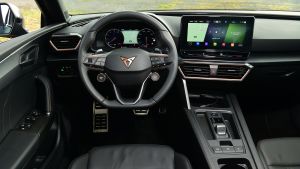
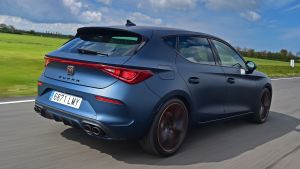
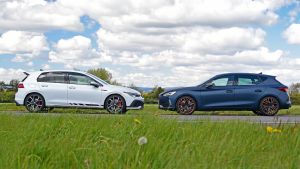
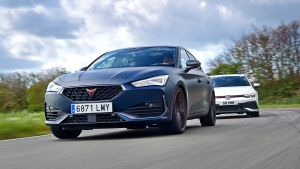
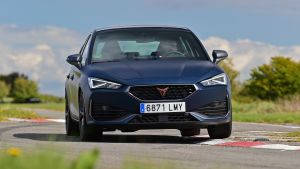
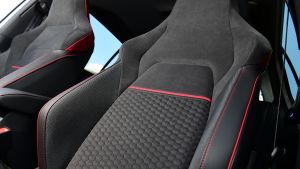
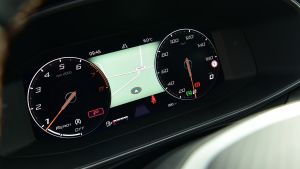
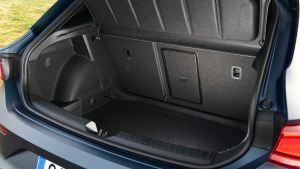
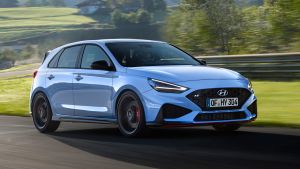
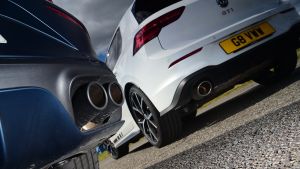
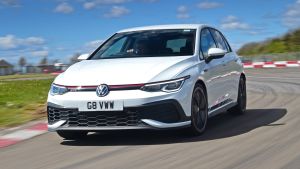
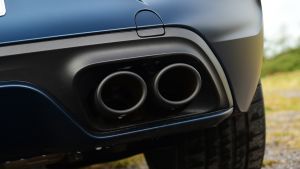
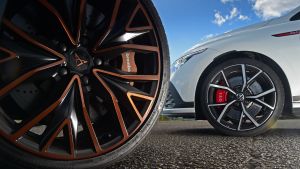
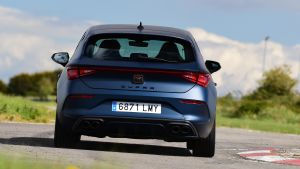
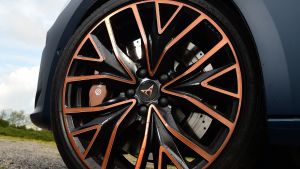
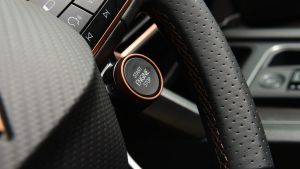
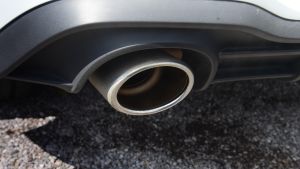
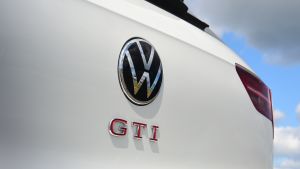
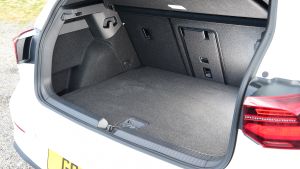
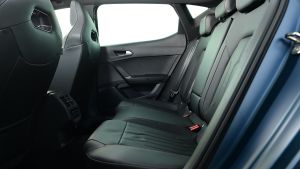
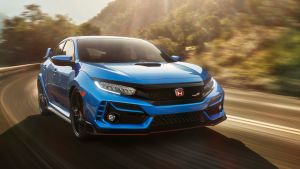
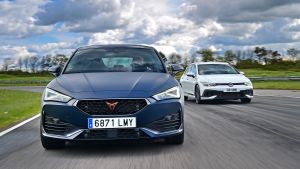
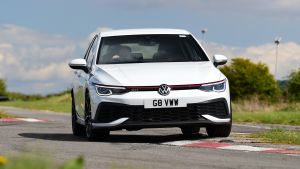
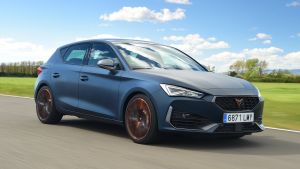
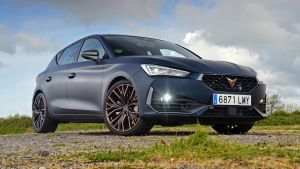
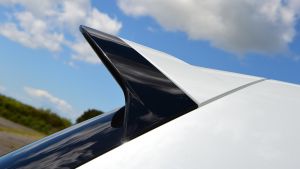
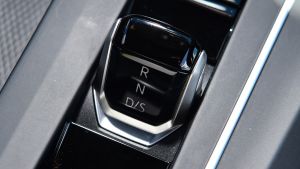
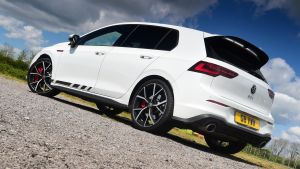
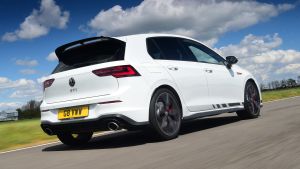
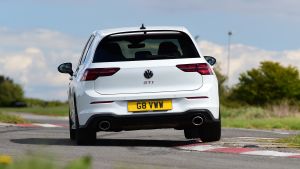

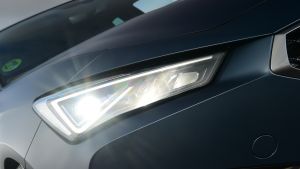
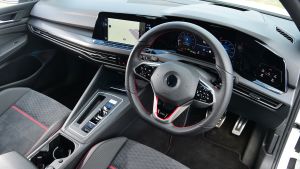
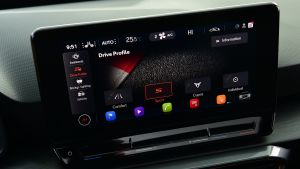
Comments
Post a Comment